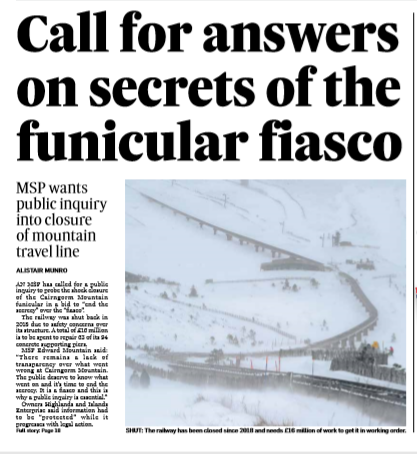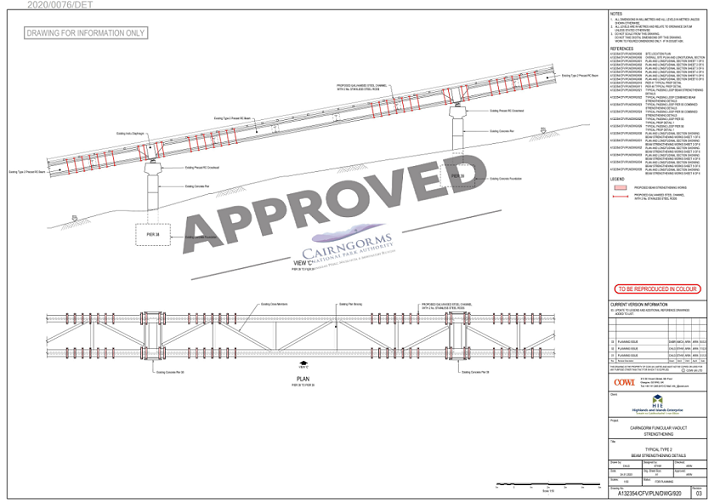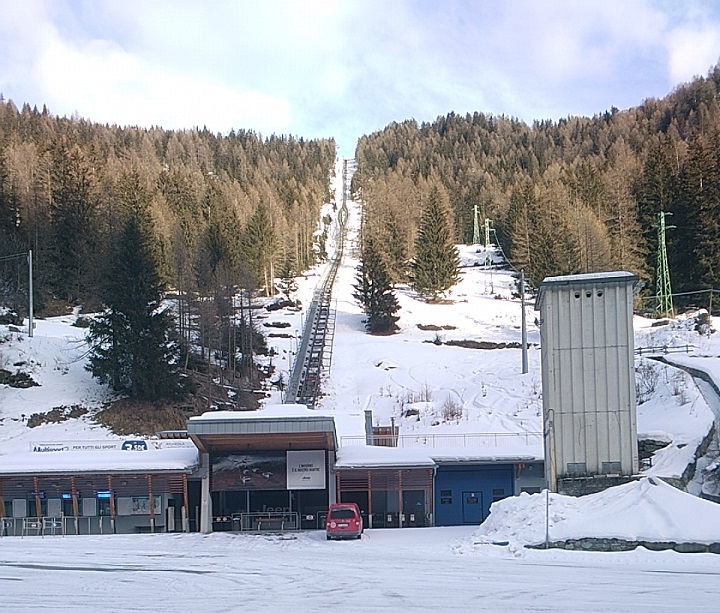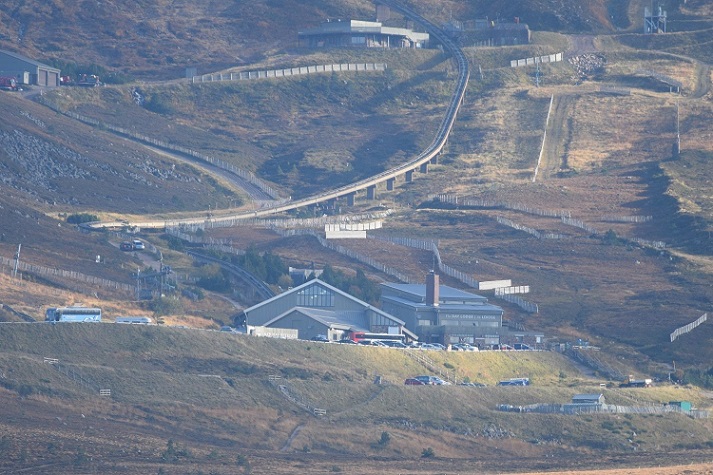
When I started this series of posts (see here), (here), (here), (here) and (here) I had expected to write three, maybe four, before reaching a conclusion. But as time went on, more and more information has been revealed through Freedom of Information (FOI) requests. These FOI’s enabled correlation with the COWI (engineering )report, Highland and Islands Enterprise (HIE’s) Financial Business Case (FBC) and the planning application lodged with the Cairngorms National Park Authority (CNPA). So where are we?
The history of the funicular from a health a safety perspective
1999. By the time the funicular build started the estimated costs were out of control and Morrisons Construction were being asked to find cost-cutting measures, one of which was by changing the design of the viaduct from steel to concrete, a change which appears to have contributed to the funicular failure, and would have been approved by A. F. Crudens, the designers, and presumably HIE.
01/03/2001. The Cairngorm Recreation Trust Ltd changed its name to Cairngorm Mountain Trust Ltd, two months after its wholly owned subsidiary, the Cairngorm Chairlift Company, which was the client for the funicular build, changed its name to Cairngorm Mountain Ltd (CML). All obligations for the construction of the funicular transferred to the CMT/ CML, including custodianship of the Health and Safety file required under the Construction Design and Management Regulations 1994. This file should have held all information relating to the construction of the funicular from the initial design details, all changes to the design and construction and, on completion should have been handed to CMT/CML as owners by the designers A.F.Crudens.
2008. Due to the concerns about the financial situation of CML, HIE bought out all interested parties to ensure that an asset it had paid for, the funicular, did not fall into other hands. At that time, as the new owner, HIE should have received the complete funicular build Health & Safety file, but, from comments made in the COWI report and confirmation by HIE through an FOI request, only a limited file was available as a hard copy on transfer of ownership. Employees of HIE – Mr K. Bryers as Head of Infrastructure at HIE had lead responsibility for the funicular – should have requested the file knowing that it was a legal document, which needed to be updated and maintained throughout the life of the funicular and in case of problems in the future, including funicular failure!
There appear to be two possible answers to the question of what happened to the file, either,
(1) A. F. Crudens failed to hand over the file to CML/ CMT on completion of the build and the funicular entering service, or,
(2) The CMT and its subsidiary CML failed to preserve the file.
Because A.F.Crudens went into administration in 2017 and both they and the CMT are private businesses, it is impossible to determine through an FOI request what happened to the H&S file. Only a Public Inquiry might be able to do that. What steps, if any, HIE took to recover the file is unclear.
2014. HIE sold off CML to Natural Assets Investment Ltd, to be operated by Natural Retreats, but retained ownership and liability for the funicular and responsibility for it in terms of Health and Safety.
2018. After the failure of the funicular and CML going into administration for a second time, HIE bought back the assets of CML from the administrators to ensure that everything HIE had paid for remained in their control through their subsidiary Cairngorm Mountain Scotland Ltd (CMSL). Any records of funicular health and safety tasks that HIE had delegated to CML should have returned to HIE.
Now back to the original question – will the repair to the funicular work?
The gaps in the Health and Safety record mean that it is very difficult to answer questions about whether the failure of the funicular can be attributed to original design flaws or maintenance failures, issues which I have explored in these posts. There are still some reports, which HIE are refusing to issue, which might cast light on who and what was responsible for the funicular failure.
We can, however, assume that the short-term answer to the question is YES because both COWI and Balfour Beatty are knowledgeable and reputable companies.
But it is not as simple as that. The planning application is also for STRENGTHENING works to make sure that the viaduct does not collapse or deteriorate any further.

I can find no document setting out how long these strengthening works are expected to last although Charlotte Wright, CEO of HIE, stated in an article in the P&J on Monday,08/02/2021 she expected this to be “for a very long time”! It is possible that information to back up this assertion is held in a file not yet released by HIE
The following picture is of a funicular railway in Frachey, Italy. A video is available here.

Now compare that with the Cairngorm funicular below.

The immediate and most noticeable difference between the two is that the Frachey funicular is straight!
All the twists and curves in the Cairngorm funicular viaduct put immense stresses on the structure because the forces on the ropes act to straighten out those curves. The COWI report mentions tensions of the rope acting to topple the piers in a transverse direction as well as in line with the track. More evidence that the whole design of the funicular was fundamentally flawed!
On Friday 05/02/2021 I received the following reply to an FOI I had submitted to HIE requesting a copy of any report they held into why the funicular had failed:-

This is very significant. While HIE are now saying that while they have commissioned an Expert Witness report it only covers some of the reasons why the funicular has failed! If you do not know 100% what has caused a structural failure, then how therefore do you know how long any repairs/ strengthening works will last? If a substantial crack appears in the wall of your house, you would engage a surveyor to find out what had caused that crack and tell you what the solution to fix it would be, for example land subsidence requiring concrete underpinning of the existing foundations etc. But HIE has not done that at Cairngorm, they are failing to keep their own house in order.
Also missing is any information about how many passengers the funicular will be able to carry in its repaired state. While it was designed to carry 120 passengers, and was in fact carrying up to 100 passengers when it was removed from service, the COWI report said it should have been carrying no more than 50 passengers at most and more likely 30 persons:-
“The superstructure does not comply with strength criteria of BD 44/15. Failures are noted in hog bending at anchorages, and shear in numerous spans in the structure both for In Operation and Out of Operation loading. The hog bending failure is slightly more critical than the shear failure – to comply with BD 44/15 the carriage load would have to be limited to 30 persons to avoid bending failure which is more onerous than the limit of 50 persons to avoid shear failure. For reference, BD44/15 is a bridge design standard. Hog bending is the bending of the structure upwards, the opposite of sagging which will occur in beams as the train moves onto them.”
In other words it appears HIE/Natural Retreats were operating the funicular way beyond what was safe to do before it was shut down. You can see why a Public Inquiry is needed.
Where does that leave the funicular now?
It is forecast that the coronavirus may be with us for a long time and along with that physical distancing – what then will be the carrying capacity of the repaired funicular? Certainly not the 1200 people per hour that it should be able to carry, setting aside that in practice the capacity on a good day was probably only in the region of 600pph! The capacity is more than likely going to be somewhere between 150 to 300pph, with the higher figure as a maximum. No wonder the Scottish Government and HIE have had to commit to subsidising CMSL by up to £73m over the next 30 years (see here).
On the continent a 4 person chair with a capacity of 1200pph is currently with coronavirus allowed to carry 600pph, 2 people on each chair, which is at least twice the projected capacity of the funicular.
What all these posts on Parkswatch have shown is that despite HIE throwing millions of pounds at the funicular, it is a commercial disaster and a disaster for skiing in Scotland. New, more environmentally and people friendly uplift should be the main focus with the funicular removed over time.
More and more questions are being heaped on the mistaken premise that Cairngorm Mountain needs a funicular. We all need to remember that HIE placed this major restriction on the ill-fated masterplan project for the Future of Caringorm that no matter what ideas the masterplanners or the contrived consultation process came up with, the funicular would be repaired. They knew the answer they wanted for the so-called business case they presented to the Scottish Government for approval before they even started. Remember it was Fergus Ewing who stated that a masterplan for the future of Cairngorm was necessary, yet he approved the £20m plus spend, with its associated £50m subsidy over the next 30 years WITHOUT a masterplan.
On top of all this, Graham’s excellent series of articles raises many serious engineering and safety concerns over the funicular and whether the proposed repairs will last even 5 years, far less the anticipated 30 years. And what does HIE do – they are totally silent over all these concerns and hope that all these well founded concerns will all just evaporate – why – because they don’t have any answers.